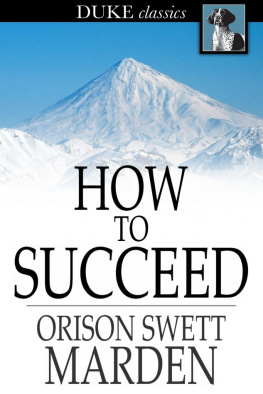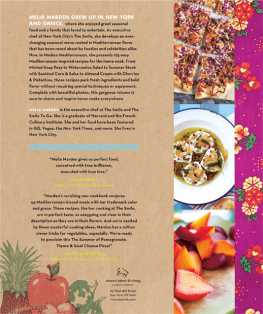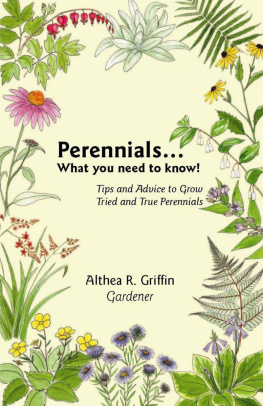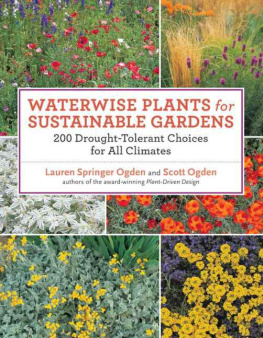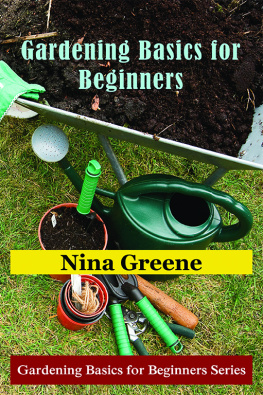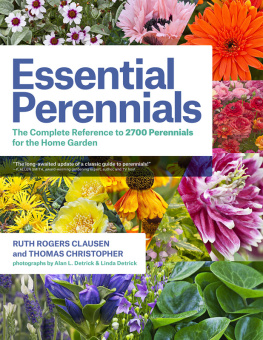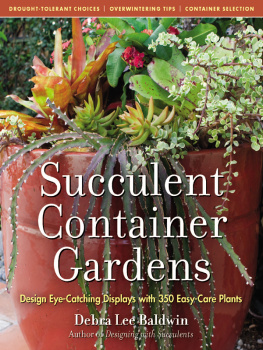BETTER PLANT CHOICES
Prettier Hardier Blooms Longer New Colors Less Work Drought-Tolerant Native
TROY B. MARDEN

First published in 2014 by Cool Springs Press, an imprint of the Quayside Publishing Group, 400 First Avenue North, Suite 400, Minneapolis, MN 55401
2014 Cool Springs Press
Text Troy Marden 2014
Photos Troy Marden 2014, except where noted
All rights reserved. With the exception of quoting brief passages for the purposes of review, no part of this publication may be reproduced without prior written permission from the Publisher.
The information in this book is true and complete to the best of our knowledge. All recommendations are made without any guarantee on the part of the author or Publisher, who also disclaims any liability incurred in connection with the use of this data or specific details.
Cool Springs Press titles are also available at discounts in bulk quantity for industrial or sales promotional use. For details write to Special Sales Manager at Cool Springs Press, 400 First Avenue North, Suite 400, Minneapolis, MN 55401 USA. To find out more about our books, visit us online at www.coolspringspress.com.
Digital edition: 978-1-6105-8967-3
Softcover edition: 978-1-59186-576-6
Library of Congress Cataloging-in-Publication Data
Marden, Troy B.
Plant this instead! : better plant choices: prettier - hardier - blooms longer - new colors - less work - drought-tolerant - native / Troy B. Marden.
pages cm
Includes index.
1. Landscape plants. 2. Landscape gardening. I. Title.
SB407.M2544 2014
635.9--dc23
2013032504
Acquisitions Editor: Billie Brownell
Design Manager: Cindy Samargia Laun
Design and layout: Diana Boger
Cover Design: John Barnett
Dedication
This book is dedicated to my aunt, Maureen Budgie Marden. She showed all of us how to love the simplest things in life.
Acknowledgments
To JeromeThank you for your patience and for making me smile every day.
To BillieThank you for your unending support, your perseverance on this project, and for making me look better than I really am. Thanks also to Cool Springs Press for your faith in this book.
A special thanks to Cheekwood Botanical Garden for letting me show up with my camera, usually unannounced, at all hours of the day and night, and especially on Mondays.
Contents
FLOWERING PLANTS
H ave you ever walked through your local garden center or nursery, looking out across the vast sea of choices before you and wondered, how will I ever decide what to plant? Have you hired a landscaper or landscape designer and questioned whether their recommendations for your yard were the best varieties for you to grow? Were they just offering you what they had on hand at the time? What about thumbing through those catalogs that begin showing up in the mailbox in late winter and early spring, enticing you with glamour shots of plants that you seemingly cant live without? Will they really thrive in your yard or garden? These questions and more are what Plant This Instead! will help you answer.
In the 1980s, the Bradford pear rose to horticultural superstardom as a fast-growing, tidy, and disease-resistant tree whose white spring blooms and saturated, long-lasting red fall color were the most desirable of ornamental traits. Thirty years later, those trees are splitting in half under the weight of ice and snow, losing large limbs in windstorms, and damaging homes, cars, and more in the process. Once touted as a fruitless ornamental, Bradford and other varieties of callery pear are now reseeding with wild abandon in forested areas, choking out native vegetation and disrupting local ecosystems. Yet they are still being soldbut there are vastly better choices.
The Bradford pear is but one example on a long list of plants in todays nurseries and garden centers that have proven problematic in the landscape for a variety of reasons. In a few cases, they may truly be aggressive or invasive in nature, but the opposite can also be true. Perhaps they are weak or lacking in vigor. Maybe they are prone to attacks by insects or susceptible to outbreaks of difficult-to-control diseases. Todays conscientious gardeners are working hard to be less dependent on chemical sprays, so plants with natural resistance to pests and diseases are increasingly popular, and for good reason. Less spraying is not only safer for the environment as a whole, but it is better for the smaller ecosystems that exist within our gardens, tooand its safer for us, the gardeners. Other maintenance factors play into our decisions, too, and when we are considering new plants, tasks such as pruning, watering, fertilizing, staking, and others must be taken into account. The less of this we have to do, the lower maintenance our gardens become, and as we trend toward smaller landscapes and gardens, high-maintenance, disease-prone, invasive, or aggressive plants are simply not feasible.

Plant This Instead! offers suggestions for replacing these and a wide range of other trees, shrubs, flowering plants, and vines whose landscape value is often questionable. It also addresses the many advances that have been made in plant breeding, especially in annual and perennial garden flowers, in the past two decades. Plants once thought of as utilitarian have been reinvented with new colors, more vigor, and improved hardiness, and instead of being supporting characters, they now take starring roles in many beds and borders.
Where appropriate, Plant This Instead! proposes native plants as replacements for nonnative and invasive species, but this isnt a book aimed solely at native plants. Many of our favorite garden and landscape plants, from ginkgo trees to camellias and daylilies, are not part of our native plant palette. This doesnt make them any less valuable or desirable in the garden, and, in fact, with a little knowledge about which varieties are the most useful, theyll mix and mingle in perfect landscape harmony. Occasionally, youll even run across a native plant that offers beautiful blooms, colorful foliage, or other desirable traits, but when you put it in good garden soil with regular feeding and watering, it becomes a garden thug, running roughshod over nearby plants and all but eliminating anything in its path. Plant This Instead! proffers suitable replacements for those as well.
In the following pages, you will find insiders tips about choosing plant varieties that are appropriate to your climate whether you garden in Zone 3 or Zone 9. What about lawns? Should you have one? What are your options? Are there lower-maintenance alternatives that are more environmentally friendly? Youll learn how to navigate the nursery industry and find plants beyond the standard fare offered in many garden centers today or those recommended by the majority of landscapers and designers. Choosing the right location for a plant is just as important for its survival as choosing the right variety, and there are plenty of hints along those lines, too, all while planting for the future, ensuring healthy environments and ecosystems for generations to come. The focus of the book, though, is dedicated to the plants themselvesperusing, learning, choosing, and growing the plants that will thrive in your garden.


